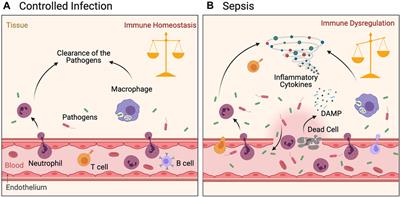
Bacteria are microscopic, single-cell microorganisms that are present in our bodies. Most of them help to break down our food for digestion, but some strains can cause infection. Some of these can also cause sepsis, which is also known as blood poisoning. It is the body’s harmful response to infection, and is very dangerous. If you think you have a bacterial infection, you need to seek medical attention right away.
There are many different causes of sepsis. The most common are injuries and medical devices, and an infection can start anywhere in your body. A broken skin ulcer or blood vessel can make it easy for bacteria to enter the body. A catheter or invasive surgical procedure can also introduce bacteria into your body and cause sepsis. You may also contract sepsis from a bacterial infection while in the hospital. If you are not aware of the symptoms, consult your doctor as soon as possible.
The infection may start anywhere in the body. Common sites include the liver, bile ducts, gastrointestinal tract, lungs, and genitourinary tract. If your skin is broken or ulcerated, bacteria from the environment can enter the body. Performing invasive medical procedures can also introduce bacteria into your body. These procedures can allow bacteria to accumulate in the body and lead to sepsis. This condition is often life-threatening and requires immediate medical attention.
The most common causes of sepsis are bacterial infections and bloodstream infection. However, if you develop a bacterial blood infection, treatment may involve antibiotics. If you are diagnosed with a bacterial blood infection, you must contact a physician as soon as possible. A good doctor can help you get the proper treatment as soon as possible. There are several types of bacterial infections that can be treated successfully. The most common ones include:
Bacterial blood infections are usually treatable. They are usually caused by rod-shaped bacteria. If you are a victim of sepsis, you should seek medical help as soon as possible. Fortunately, most types of sepsis can be treated with antibiotics. Treatment of sepsis is based on the patient’s symptoms. A doctor should be able to treat bacterial blood infections if the infection is diagnosed at an early stage.
When blood poisoning is the result of a bacterial infection, it is called sepsis. When it comes to blood, sepsis can lead to a life-threatening condition called septic shock. When blood pressure drops too low, circulation is impaired and the patient goes into septic shock. Although this condition may seem mild at first, it can lead to death. Since this is the body’s own form of defense, the patient will be in a state of septic shock.
Bacterial blood infections are a potentially life-threatening type of infection. The bacterium that causes these infections is Neisseria meningitidis, and if left untreated it can cause fatal complications. If not treated immediately, it can be fatal. Although this is not a common bacterial infection, early diagnosis and treatment are key to a patient’s recovery. Symptoms can vary greatly from person to person, but in general, if the disease is caught in the early stages, it is likely to make a full recovery.
Blood infections can lead to septic shock. Infections of the lungs and other organs can lead to sepsis. If a person has an IV line or receives a blood transfusion, they may develop a blood infection. The condition is characterized by abnormal blood clotting and can leave the patient debilitated. This type of bleeding can also damage tissue.
People with weak immune systems are more likely to develop sepsis. This condition is associated with a weakened immune system. In some cases, sepsis can lead to organ damage and death. This is a serious medical emergency, so it is important to seek medical attention and visit the site https://handaldok.com
immediately. Once an infection has occurred, the body’s immune system will respond by releasing chemicals into the bloodstream to fight the bacteria.
